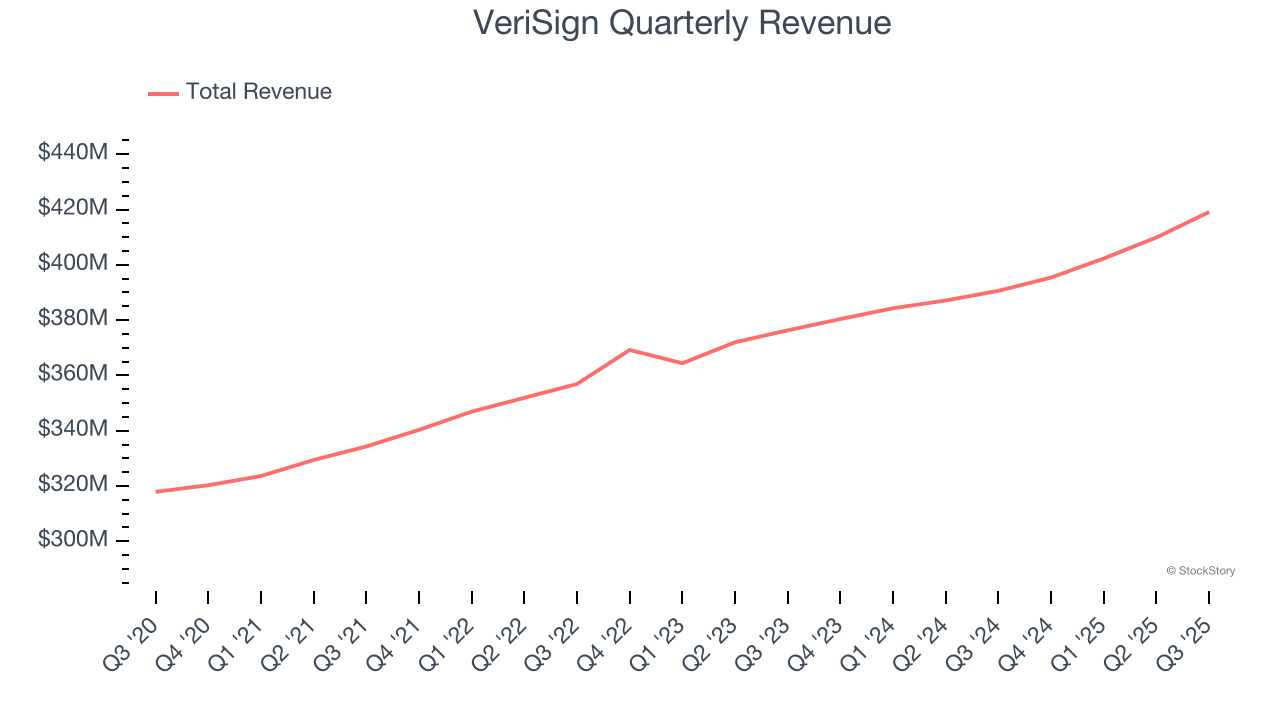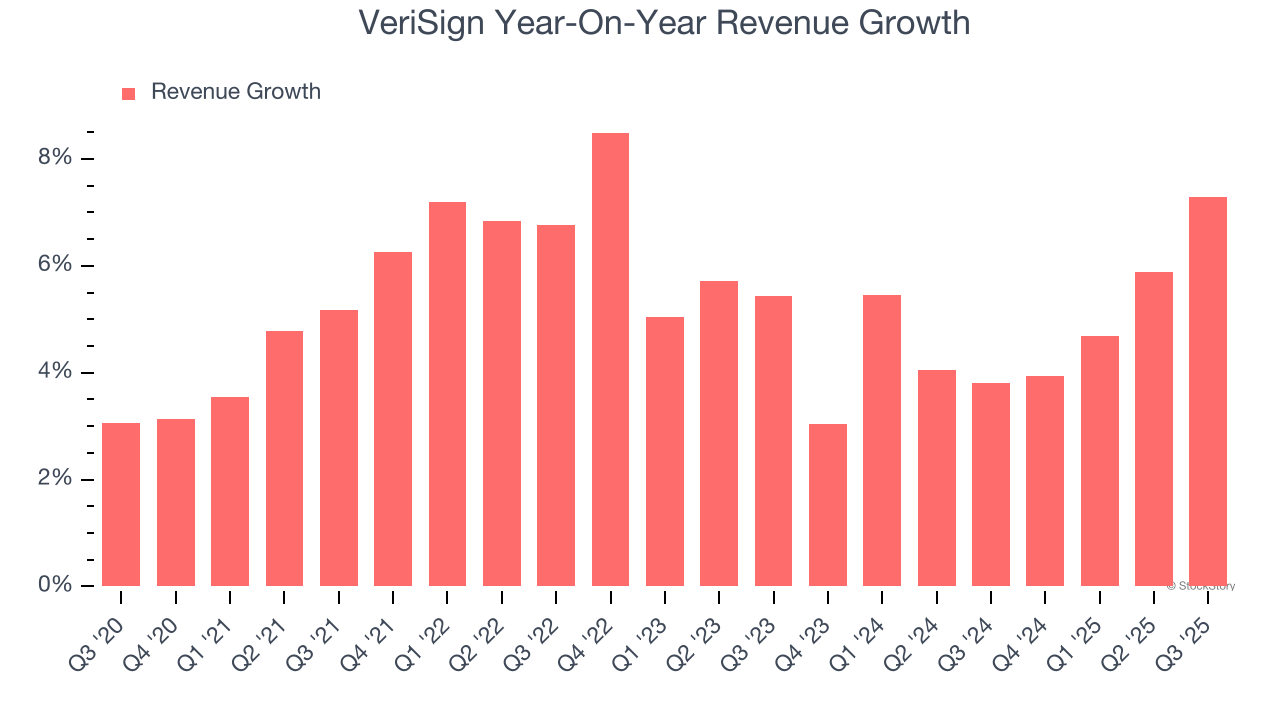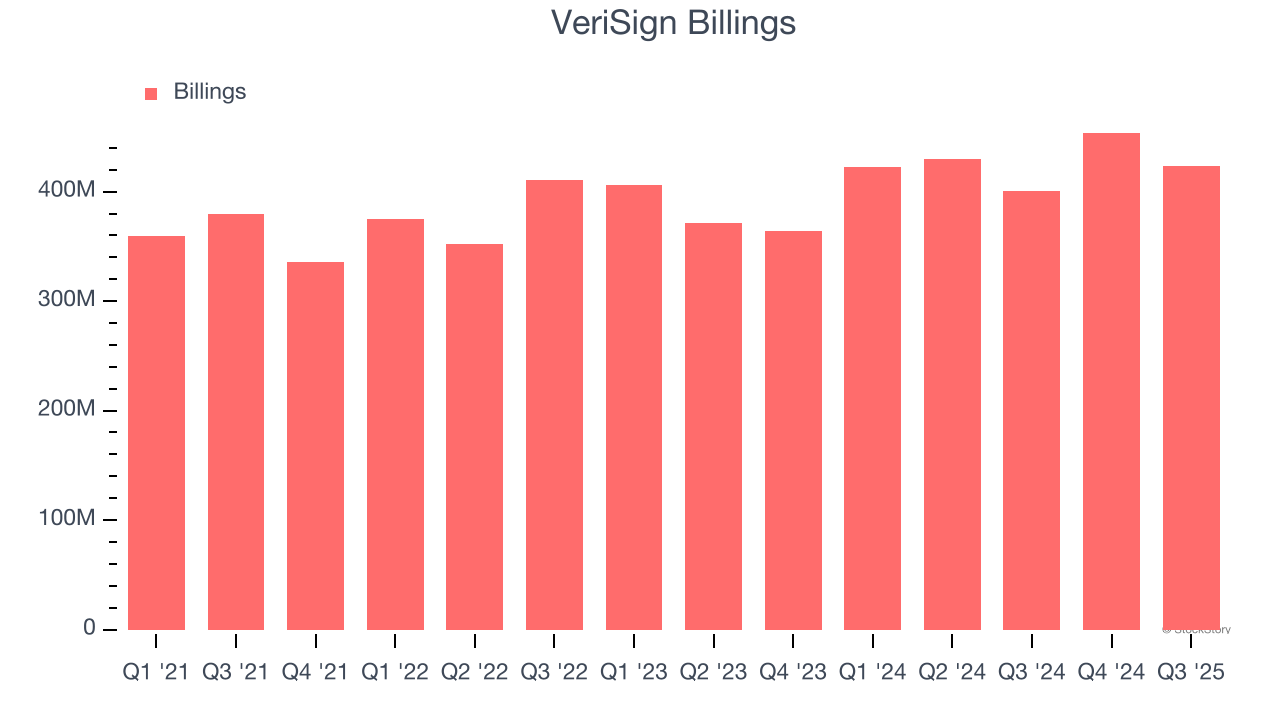
Internet infrastructure company VeriSign (NASDAQ:VRSN) reported Q3 CY2025 results exceeding the market’s revenue expectations, with sales up 7.3% year on year to $419.1 million. Its GAAP profit of $2.27 per share was 1.3% above analysts’ consensus estimates.
Is now the time to buy VeriSign? Find out by accessing our full research report, it’s free for active Edge members.
VeriSign (VRSN) Q3 CY2025 Highlights:
- Revenue: $419.1 million vs analyst estimates of $416.8 million (7.3% year-on-year growth, 0.5% beat)
- EPS (GAAP): $2.27 vs analyst estimates of $2.24 (1.3% beat)
- Operating Margin: 67.8%, down from 68.9% in the same quarter last year
- Free Cash Flow Margin: 72.3%, up from 47.5% in the previous quarter
- Billings: $423.7 million at quarter end, up 5.7% year on year
- Market Capitalization: $23.53 billion
Company Overview
As the silent guardian of the internet's roadmap, VeriSign (NASDAQ:VRSN) operates the authoritative registry for .com and .net domain names, enabling websites to be found reliably when users type web addresses.
Revenue Growth
A company’s long-term sales performance can indicate its overall quality. Any business can put up a good quarter or two, but the best consistently grow over the long haul. Over the last five years, VeriSign grew its sales at a weak 5.3% compounded annual growth rate. This was below our standard for the software sector and is a poor baseline for our analysis.

Long-term growth is the most important, but within software, a half-decade historical view may miss new innovations or demand cycles. VeriSign’s annualized revenue growth of 4.8% over the last two years aligns with its five-year trend, suggesting its demand was consistently weak. 
This quarter, VeriSign reported year-on-year revenue growth of 7.3%, and its $419.1 million of revenue exceeded Wall Street’s estimates by 0.5%.
Looking ahead, sell-side analysts expect revenue to grow 4.1% over the next 12 months, similar to its two-year rate. This projection is underwhelming and suggests its newer products and services will not catalyze better top-line performance yet.
Software is eating the world and there is virtually no industry left that has been untouched by it. That drives increasing demand for tools helping software developers do their jobs, whether it be monitoring critical cloud infrastructure, integrating audio and video functionality, or ensuring smooth content streaming. Click here to access a free report on our 3 favorite stocks to play this generational megatrend.
Billings
Billings is a non-GAAP metric that is often called “cash revenue” because it shows how much money the company has collected from customers in a certain period. This is different from revenue, which must be recognized in pieces over the length of a contract.
VeriSign’s billings punched in at $423.7 million in Q3, and over the last four quarters, its growth slightly outpaced the sector as it averaged 15.1% year-on-year increases. This alternate topline metric grew faster than total sales, meaning the company collects cash upfront and then recognizes the revenue over the length of its contracts - a boost for its liquidity and future revenue prospects. 
Customer Acquisition Efficiency
The customer acquisition cost (CAC) payback period represents the months required to recover the cost of acquiring a new customer. Essentially, it’s the break-even point for sales and marketing investments. A shorter CAC payback period is ideal, as it implies better returns on investment and business scalability.
VeriSign is very efficient at acquiring new customers, and its CAC payback period checked in at 22.5 months this quarter. The company’s rapid recovery of its customer acquisition costs indicates it has a highly differentiated product offering and a strong brand reputation. These dynamics give VeriSign more resources to pursue new product initiatives while maintaining the flexibility to increase its sales and marketing investments.
Key Takeaways from VeriSign’s Q3 Results
Revenue and EPS both beat slightly. Zooming out, we think this was a decent quarter but one without many big surprises, good or bad. The stock remained flat at $249 immediately following the results.
Big picture, is VeriSign a buy here and now? We think that the latest quarter is only one piece of the longer-term business quality puzzle. Quality, when combined with valuation, can help determine if the stock is a buy. We cover that in our actionable full research report which you can read here, it’s free for active Edge members.
